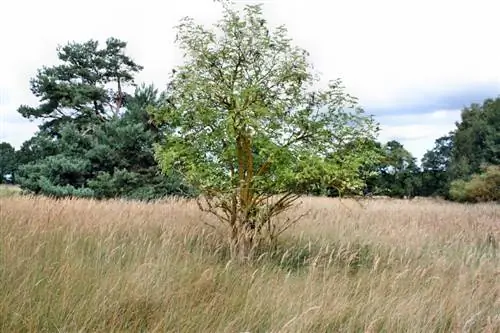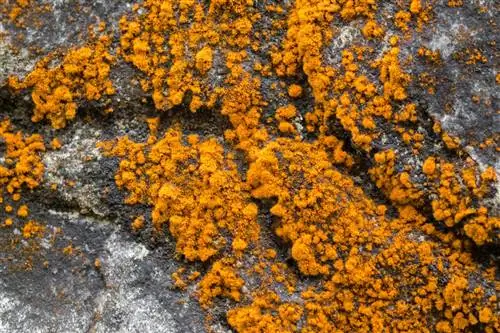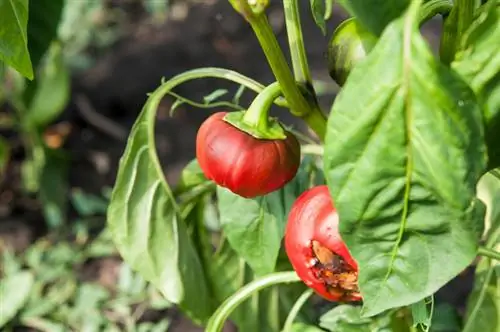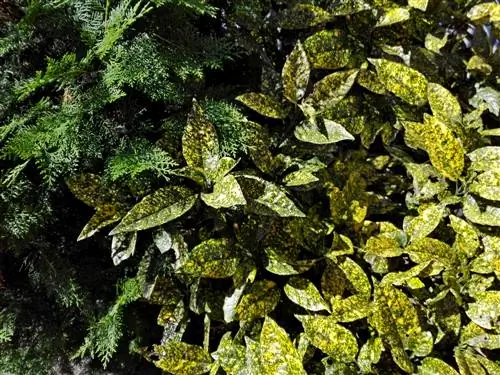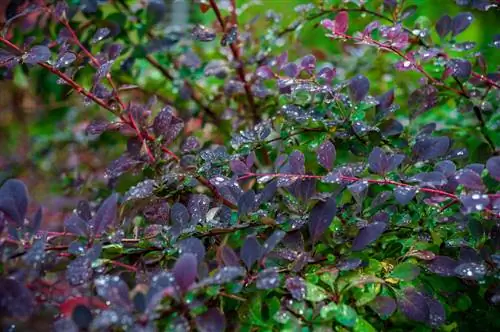- Author admin [email protected].
- Public 2023-12-16 16:46.
- Last modified 2025-01-23 11:20.
As a wild fruit tree, elderberry has a robust constitution, so it is rarely affected by diseases. When problems arise, a few triggers come into focus. You can find out what these are here.
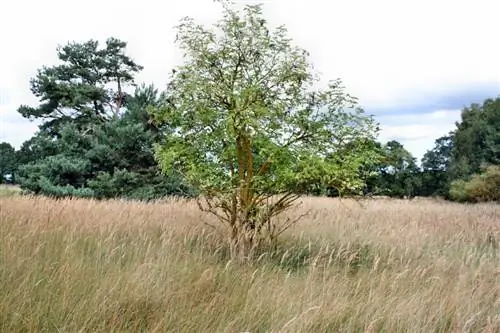
What diseases are most common in elderberry?
The most common diseases of elderberries are cone wilt, rot and gray mold. Umbelliferous wilt is caused by ascomycete fungi, wilting is caused by unfavorable weather or a lack of nutrients, and gray mold is caused by the weakness parasite Botrytis cinerea. Prevention and treatment include pruning, plant spacing and root zone watering.
Umbel Wilt
During the ripening period, the umbels begin to wilt from the sides. Washy, red-yellow spots develop on the leaves, while at the same time the elderberries are not ripening. The progression of the disease is promoted by damp weather. Scientists recently discovered that it is a fungal infection. Fusarium sambucinum, a well-known ascomycete, and Phoma sambuci-nigrae have been identified as causative agents.
Effective control agents are not yet available. The extent to which preparations against gray mold and fruit rot have an effect is controversial. All affected plant parts should be removed immediately and burned.
trickling
If the weather is wet and cold during flowering, elderberry is threatened by waterfall. The flowers fall prematurely, resulting in minimal fertilization. In addition to unfavorable weather conditions, a lack of nutrients also leads to the disease. How to prevent:
- fertilize balanced organically, without too much nitrogen
- administer an additional 10 grams of borax per square meter shortly before flowering
- Create a soil analysis if the occurrence occurs repeatedly
Gray horse
The widespread weakness parasite Botrytis cinerea does not spare elder bushes either. The risk of infection is particularly high during flowering. The entire plant becomes covered with a gray fungal lawn. Reddish-brown spots develop on leaves and berries. The shoots hang limply and the fruits rot. The following treatment methods are possible:
- disinfect the affected soil with lime nitrogen
- cut off diseased shoots completely
- Elderberry spray with Bayer Garten Fruit Mushroom Free Teldor (€38.00 at Amazon) or Baycor
- strengthen endangered elderberries from March with liverwort extract
- Oscorna fungus prevention or Myco-Sin have a preventive effect
- Make sure the planting distance is airy
- prune annually
Cautious care contributes significantly to the development of resistance to diseases. In particular, this includes never watering an elderberry over flowers and leaves, but always directly at the root area.
Tips & Tricks
The leaves of all elderberry species contain a glycoside that is not only toxic to humans. This ingredient penetrates the soil and inhibits the growth of other plants. Therefore, do not leave the autumn leaves lying in the garden, but rather burn them and dispose of the ashes in the household waste.

